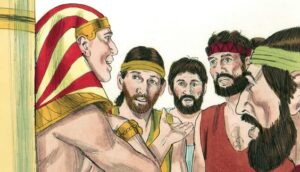Introduction
The question of who the first man was has intrigued humanity for centuries. According to the Bible, the first man created by God was Adam. This blog explores the biblical account of Adam, his significance, and the impact of this belief on human history and culture.
The First Man in the Bible
In the Bible, specifically in the Book of Genesis, Adam is described as the first man created by God. Genesis 2:7 states, “Then the LORD God formed a man from the dust of the ground and breathed into his nostrils the breath of life, and the man became a living being.” This passage highlights the divine creation of humanity and the unique relationship between God and man.

The Creation of Adam
God created Adam from the dust of the ground, signifying the connection between humans and the earth. By breathing life into Adam, God imparted a divine spark, making humans distinct from other creatures. This act of creation marks the beginning of human existence in Judeo-Christian belief.
The Significance of Adam
Adam is not just the first man; he is also the ancestor of all humanity. In Genesis 2:15, God places Adam in the Garden of Eden to “work it and take care of it,” giving him purpose and responsibility. Adam’s choices, especially the disobedience in eating the forbidden fruit, have profound theological implications. This event, known as the Fall, introduces the concept of original sin, affecting all of humanity.
Adam and Eve
Adam was not alone for long. According to Genesis 2:21-22, God created Eve from one of Adam’s ribs to be his companion. Together, Adam and Eve lived in the Garden of Eden until their disobedience led to their expulsion. Their story emphasizes themes of companionship, responsibility, and the consequences of their actions.
Impact on Human History and Culture
The story of Adam has greatly influenced Western culture, art, literature, and theology. It forms the foundation of Judeo-Christian understandings of human nature, sin, and redemption. The narrative has been depicted in numerous works of art, from Michelangelo’s Sistine Chapel ceiling to John Milton’s “Paradise Lost.”
Modern Interpretations
While the story of Adam is central to biblical teachings, it has also been interpreted in various ways. Some view it as a literal account of human origins, while others see it as a symbolic story conveying deeper truths about humanity’s relationship with the divine, morality, and the human condition.
Conclusion
The question of who the first man was leads us to the rich story of Adam in the Bible. As the first human created by God, Adam’s life and actions have left a lasting mark on religious thought and cultural history. Whether viewed literally or symbolically, the story of Adam continues to offer insights into the human experience and our place in the world.








